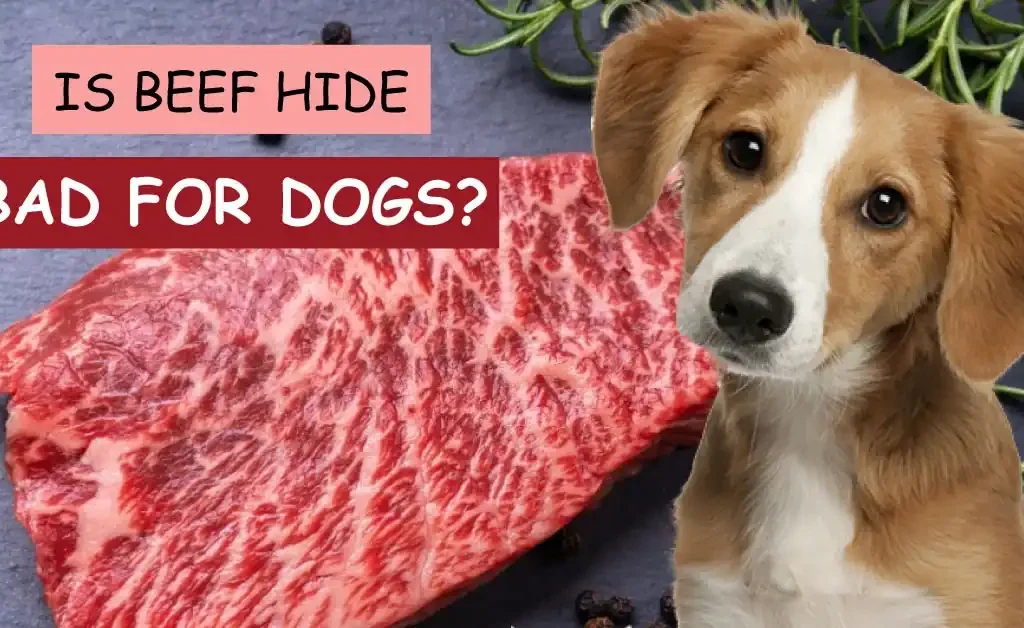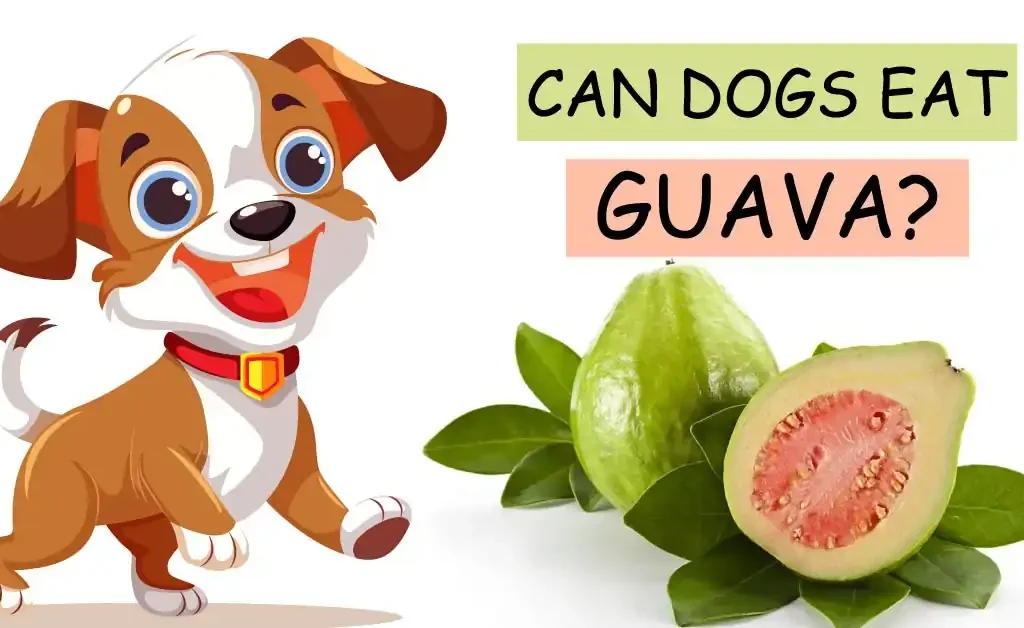As passionate carers for our canine friends, we endeavor to provide only the best for their health and happiness. Is beef hide bad for dogs? Join us as we review the facts, debunk the misconceptions, and find the answers you need to make informed decisions for your cherished pups.
Prepare to face the truth and embark on a journey that will get tails wagging and hearts fluttering!
Is Beef Hide Harmful for Dogs?
Whether beef hides harms dogs is hotly debated among pet owners and vets. Dogs enjoy chewing on beef hide because it provides hours of fun and satisfies their natural desire to gnaw.
Regarding the safety of beef hides for dogs, there are several concerns. The potential for stomach obstruction is one of the most serious consequences. When dogs chew on cowhide, minute bits may become caught in their digestive system, causing blockages and sometimes life-threatening conditions.
Furthermore, some cowhide treats undergo significant processing, including chemicals and preservatives, making them more appealing to dogs. Some sensitive puppies may experience allergic reactions or stomach distress due to these ingredients.
To safeguard your pet’s safety, supervise them while they eat beef hide treats and instantly remove any little bits that may break off. Selecting high-quality, natural beef hide goods free of additional chemicals is also critical.
Moderation is essential with any treat. While beef hides can be a tasty treat sometimes, it’s vital to supplement your dog’s diet with other safe and nutritious treats.
Consult your veterinarian if you are still determining whether beef hide treats are appropriate for your particular dog, as individual health issues and nutritional requirements differ among our loving canine companions.
What are the Advantages of Feeding Beef Hides to Dogs?
What is Beefhide for dogs? When done in moderation and using high-quality, natural goods, feeding cattle hides to dogs can provide various potential health benefits. Let us go through some of these advantages in greater detail.
1. Dental Health
The impact of beef hide chews on dental health is one of the key benefits of providing dogs with beef hide chews. As dogs chew on the firm texture of the hide, plaque and tartar accumulation on their teeth can be scraped away. This approach encourages proper oral hygiene and lowers the risk of dental problems, including gum disease and tooth decay.
2. Mental Stimulation
Dogs can benefit from cerebral stimulation by chewing on cattle skins. It satisfies their natural want to gnaw while providing them with a constructive and fun way to spend their time. This mental stimulation is perfect for puppies and active dogs since it helps prevent boredom and destructive behavior.
3. Jaw Strength and Muscle Development
The resistance provided by cow hides during chewing assists in developing a dog’s jaw muscles. A strong jaw is necessary for tasks such as eating, playing, and carrying objects, all of which contribute to general physical health and functionality.
4. Anxiety and Tension Reduction
Chewing can be a calming habit for dogs and may aid in the reduction of anxiety and tension. Chewing produces endorphins, which have a relaxing effect and induce relaxation.
5. Dietary Enrichment
Beef hide snacks can provide dietary enrichment, particularly for dogs on a balanced diet. They spice their food, making mealtime more exciting and delightful for our four-legged friends.
6. Weight Control
Giving dogs beef hide chews as treats on occasion can be part of a well-managed weight control program. Chewing may enable them to satisfy their hunger and prevent excessive food cravings between meals.
7. Joint Health
Chewing on beef hides can provide low-impact exercise for senior dogs or those with joint concerns and aid in maintaining joint mobility.
It is important to note that all dogs may not experience these benefits, and individual sensitivities to beef hide treats may vary. As with any food change or new treat, monitoring your dog’s reaction and speaking with your veterinarian to ensure that beef hide chews are appropriate for your pet’s specific health needs and conditions is critical.
The Dangers of Giving Beef Hide to Dogs
Feeding cow hides to dogs can pose health dangers, mainly if low-quality or badly processed items are utilized or given in large quantities. Pet owners need to be aware of these potential risks to ensure the security and well-being of their animals. Let’s examine the risks to dogs’ health associated with feeding them cow hides in more detail.
1. Gastrointestinal Obstructions
One of the most severe issues for beef hides is the possibility of gastrointestinal obstructions. When dogs chew on cow hides, small bits may become caught in their digestive system, producing severe blockages that require prompt veterinarian intervention.
2. Choking Hazard
Some beef hide treats may be too large or have irregular shapes, raising the risk of choking, particularly in tiny dogs or aggressive chewers who may swallow large chunks whole.
3. Digestive Upset
Some dogs are sensitive to cow hides or the compounds used during manufacturing, causing digestive upset. Consuming beef hides may cause stomach problems such as diarrhea or vomiting.
4. Allergic Reactions
Artificial flavors, colors, or preservatives in beef hides can cause allergic reactions in some dogs, resulting in skin irritation, itching, or other allergic symptoms.
5. Bacterial Contamination
If beef hides are not correctly handled and stored, they may become contaminated with bacteria, potentially resulting in foodborne diseases.
6. Caloric Intake
Because beef hide treats are high in calories, overfeeding them to dogs may result in weight gain and obesity, mainly if provided in addition to regular meals.
7. Dental Fractures
Beef Hides can be excessively tough for some dogs in rare situations, resulting in dental fractures or tooth injury.
How Should Dogs Be Fed, Beef Hides?
To protect the safety and happiness of dogs, feeding beef hides takes careful consideration. Here’s a step-by-step approach to providing cow hides to dogs.
1. Select High-Quality Beef Hides
Look for natural beef hide products without artificial additives, colors, or preservatives. Read the box and ingredient labels to ensure you’re choosing a recognized and safe brand.
2. Size Matters
Choose cow hide chews based on your dog’s size and breed. The chew should be large enough to avoid choking problems but not so huge that it causes discomfort during chewing.
3. Supervise Chewing Sessions
Always keep an eye on your dog when they are chewing on their beef hide treat. This precaution allows you to monitor their chewing habits and avoid potential problems.
4. Gradual Introduction
When giving beef hide chews to your dog for the first time, introduce them gradually. Begin with brief chewing sessions to assess their reaction and ensure they tolerate the treat well.
5. Timing
Give your dog beef hide chews after they have finished their usual food. Chewing on a full stomach prevents overeating, which reduces the risk of your dog swallowing huge portions in a rush.
6. Monitor Consumption
To avoid overfeeding, limit the frequency of beef hide treats. Because these chews might be high in calories, use them as occasional incentives rather than everyday snacking.
7. Remove Small Pieces
Small pieces of beef hide may break off as your dog chews. Remove any remaining fragments as soon as possible to avoid choking or gastrointestinal problems.
8. Avoid Aggressive Chewers
If your dog is aggressive or habitually swallowing huge portions without thoroughly chewing, you should reconsider giving him beef hide chews. Choose safer alternatives, such as stuffed animals or puzzle feeders.
9. Store Properly
Keep unused beef hide treats in a cool, dry place away from direct sunlight to maintain freshness and prevent bacterial contamination.
10. Monitor Digestive Health
After feeding beef hide chews, watch your dog’s digestion. Stop giving treatment and see your vet if you observe gastrointestinal issues like diarrhea or vomiting.
For assurance that beef hide treats are secure and suitable for your dog’s dietary requirements and overall health, speak with your vet. Following these instructions will allow you to provide your pet with a safe and fun chewing experience using beef hide treats.
What is the History of Giving Beef Hides to Dogs?
Dogs are descendants of wolves and were hunters and scavengers before becoming domesticated. In the wild, wolves will consume the entire body of their victim, including the bones, hide, and internal organs. They received essential nutrients from this diet, which also helped to keep their teeth clean.
Dogs were fed a diet like their wild ancestors, even after being domesticated. Early humans fed their canine companions meat and other animal byproducts like cattle hides as a source of food and nutrition. Humans have used numerous animal parts as dog treats, including cattle hides.
These sweets were not only used to reward excellent behavior but also to give dental advantages through chewing. As industrialization and commercial pet food production increased in the nineteenth and twentieth centuries, dog owners gained access to various processed dog diets and treats. Beef skins were processed and sold as chew toys, which were popular due to their durability and dental advantages.
Using cattle hides as dog treats has provoked debate over their safety and quality in recent years. Concerns regarding chemical processing, additives, and potential contamination have prompted pet owners and veterinarians to exercise caution when selecting the type and source of beef hide treats for their dogs.
As pet owners become increasingly concerned about their dogs’ health and nutrition, a growing emphasis is on providing balanced and natural foods. While cattle hide chews can provide dental advantages and cerebral stimulation, their quality and origin have become critical factors.
What are the Alternatives to Dog Beef Hides?
Various beef hide substitutes can provide safe and fun chewing experiences for dogs. These alternatives cater to multiple preferences, dietary requirements, and chewing methods. Let’s take a closer look at some of the most popular options.
1. Bully Sticks
Bully sticks are manufactured from dried bull or steer pizzles and are a natural, single-ingredient chew. They are highly digested and may suit dogs with beef or other protein allergies.
2. Rawhide Substitutes
Consider rawhide substitutes produced from vegetables or other animal sources for dogs with sensitivity or digestive concerns. Sweet potato chews, chicken strips, and fish skins are other alternatives.
3. Natural Antlers
Antlers from deer, elk, or moose are a mineral-rich and long-lasting chew choice. They are available in various sizes, making them a long-lasting solution for dogs with intense chewing habits.
4. Nylon Chews
Non-edible nylon chews are a fantastic choice for aggressive chewers. They come in a variety of forms and textures to suit different tastes.
5. Dental Chews
Dental chews are made specifically to boost dental health. They frequently have ridges or textures that aid in cleaning teeth and reducing plaque and tartar development.
6. Rope Toys
Rope toys are fantastic for interactive play and may also be used to clean teeth as dental floss. Check if they are made of non-toxic and safe materials.
7. Freeze-Dried Meat Treats
Single-ingredient freeze-dried meat treats, such as chicken or beef, can be broken into smaller pieces for training or occasional incentives.
8. Deer or Elk Antler Chews
Like natural antlers, these alternatives give a long-lasting chew choice rich in minerals.
Final Words
Is beef hide bad for dogs? As responsible pet owners, we can make informed decisions for our four-legged friends if we know the hazards and advantages. It’s all about striking a balance that makes our pups happy while prioritizing their safety and well-being. Read more for a better understanding.
Frequently Asked Questions (FAQs)
Q: Is beef hide bad for dogs as a treat?
A: Not all dogs enjoy beef hide treats. Some people may have stomach problems or allergies. Keep an eye on your dog’s reaction and visit a veterinarian if unsure.
Q: Can beef hide treats be dangerous to children?
A: Yes, choking can occur if the pieces are not adequately sized or dogs ingest huge portions. Select the appropriate size and monitor chewing.
Q: Can pups consume snacks made from beef hide?A: Small, correctly sized beef hide snacks can be given to puppies. Introduce them gradually and observe their reaction.




